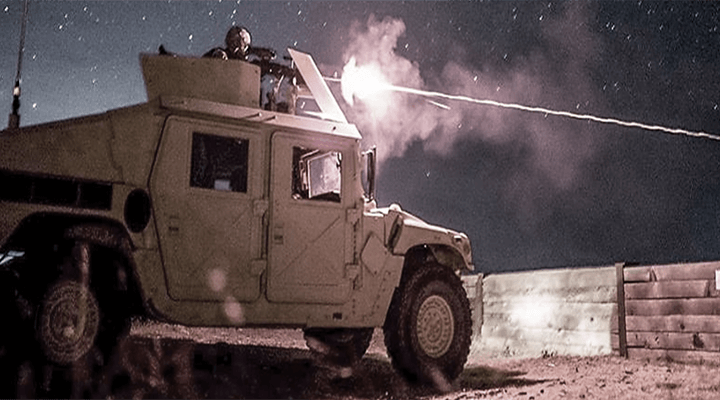Yesterday, we began a discussion of “The Army Modernization Imperative,” the recent report from Andrew Hunter and Rhys McCormick at the Center for Strategic and International Studies. Years of counterinsurgency and counter-terrosism warfare have left the U.S. at a conventional disadvantage relative to its likely near-peer adversaries, Russia and China. The most recent force drawdown, compounded by several high-profile development failures, has hit the Army’s modernization efforts harder than previous drawdowns.
The Army does not have the money to undertake any serious new platform development, nor will it have that money for the foreseeable future. Indeed, it does not even seem to be planning on asking for it. How then, does the nation meet the challenge of remaining strong enough to deter a “rational actor” like Russia? After all, the 1980s motto “peace through strength” indeed kept the peace between the U.S. and the Soviet Union for the duration of the Cold War.
The report’s subtitle is “A New Big Five for the Twenty-First Century,” a reference to the big five programs of the late 1970s that form the core of today’s Army: the Abrams and Bradley, plus the Black Hawk and Apache helicopters, and the Patriot missile system. The new big five in the report — electronic warfare, air and missile defense, cross-domain fires, advanced protection, and logistics — refer to closing capabiity gaps without developing these costly new systems.
recommendations for the future?
Hunter and McCormick offer six broad recommendations for how the Army can get the most out of its modernization dollars. Third on their list is “focus on capability gaps, not platforms.” As we’ve discussed here, the Army hasn’t fielded a new platform since the Abrams and Bradley vehicles entered service in the early 1980s, and if recent aircraft procurement programs are any guide, developing a new vehicle from the ground up would be a long and expensive proposition.
“Given funding limitations,” the authors say, “the Army should not focus on specific platforms, but instead on crosscutting capabilities necessary for future conflicts.” They argue, “It is less important that the Army develop specific platforms to address these gaps and more important that it is able to broadly deploy new capabilities to address the gaps themselves across the force.”
Unfortunately, this is where the CSIS paper, like so many think tank reports, starts to break down. “At the most basic level,” the authors state, “the Army can enable cross-domain fires by making existing systems capable of striking targets across multiple domains, similar to what the SCO [Strategic Capabilities Office] did with the ATACMS [Army Tactical Missile System].”
I once heard an expert in another field describe a set recommendations for industry best practices as the equivalent of “agreeing not to murder puppies on Mother’s Day;” in other words, something so generic and so obvious that no one could disagree with it. That’s the feeling one gets after reading the CSIS report. The authors present great research that demonstrates just how bad the Army’s modernization predicament is, then punt on suggesting specifics for a path forward. Their recommendations sound great, but they lack substance.
What types of investments in technology would give our existing systems the capability of striking multiple targets across multiple domains? I don’t know, and neither apparently do the authors.
To be fair, the report does offer some specific recommendations for improving some capabilities. But in cross-domain fires, the Army’s abiity to engage targets on air, land, sea, in cyberspace, and in space (and arguably the most critical of the new big five), their recommendations fall flat. They spend a lot of time discussing how far Russia has advanced its artillery capabilities while the U.S. has not. If one agrees that range and rate of fire represent an artillery capability gap, how exactly can the Army improve the Paladin to close that gap? The report doesn’t tell us.
I don’t pretend to have the answer. But, I don’t work for a think tank that raises more than $43 million a year and has former secretaries of defense and state, chairmen of the joint chiefs, and national security advisers on its board of trustees, either.




